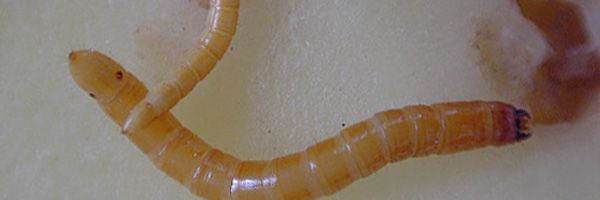
Agriotes spp. and Athous spp.
(Wireworms)
- Causal agent and transmission
Wireworms are insects of the order Coleoptera (family Elateridae). The adult is blackish brown, measures 10 to 15 mm and is not harmful. It is also named click beetle because of the characteristic sound made when getting upright on to its legs after falling on its back. The female lays eggs from May to July below the soil surface in fields covered with plant foliage (grassland, fallow land, cereals, maize, potatoes, etc.).
Damage is caused by the larvae (photo 1) which are bright orange-yellow in colour. They are hard-skinned worms ranging in size from 5 to 25 mm depending on their age and the larval stage.
Many species of wireworms may attack potatoes but the four most harmful species belong to the genus Agriotes. These are either long-cycle species such as A. lineatus, A. sputator and A. obscurus or short-cycle species such as A.sordidus (photo 2). The long-cycle species have an average 5-year cycle, including 4 years of underground larval stages, whereas the short-cycle species has a typical 1-to-2 year cycle in the South of France, where this species is now predominant, but it may have a longer cycle in colder areas where it is also currently spreading.
Damage occurs during two major periods of the wireworms’ activity, in spring and at the end of the summer, when the larvae are in the topsoil and feed on underground plant organs before moulting.
When climatic conditions are less favourable in winter and summer, larvae move deeper into the soil to about 40-50 cm and stop feeding.
- Significance
Wireworms do not usually affect the growing cycle of the potato crop but they can downgrade the aspect of the tubers by the presence of holes or galleries, dug by the larvae when feeding on the tuber flesh. In the case of severe soil infestation, tubers can be heavily damaged thus downgrading their visual quality, even making them unsuitable for marketing.





